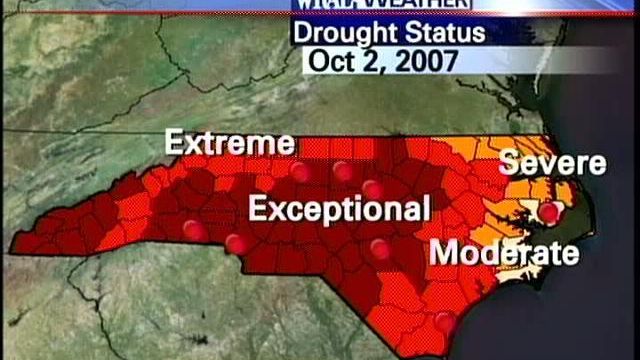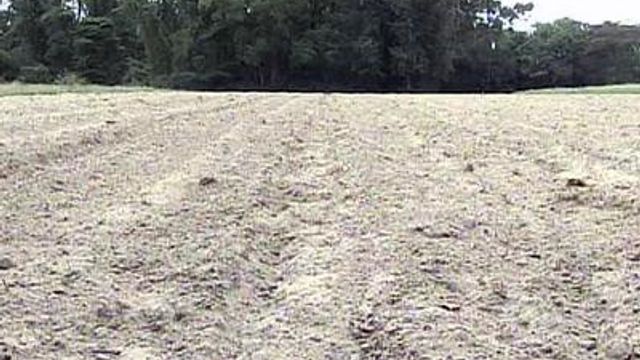Weather
Easley Calls for Collaboration as Drought Tightens Grip
As drought conditions worsen throughout the state, Gov. Mike Easley wants state agencies to work more closely with communities on water conservation.
Posted — UpdatedRALEIGH, N.C. — Gov. Mike Easley on Thursday called for increased regional collaboration among state offices to organize meetings at which communities hardest hit by the drought can discuss water conservation and strategies for identifying supplemental water sources.
The collaborative effort was announced as much of central North Carolina is experiencing the most severe drought conditions, according to a federal report released Thursday.
“Many communities are suffering the effects of one of the worst droughts we have ever seen,” Easley said. “At least one community is already hauling water by truck from other sources, and several other towns may need to seek supplemental water sources soon."
Easley said regional cooperation is needed to make sure all residents will have ample water for everyday needs such as drinking, public health and safety.
Fifty-five of the state's 100 counties are in exceptional drought, the worst of the five drought categories that the North Carolina Drought Management Advisory Council uses. The Triangle, Fayetteville, Triad and Charlotte regions are included in the exceptional drought category, according to the council's weekly report.
The last time the Triangle was in exceptional drought conditions was August 2002.
The region could see scattered showers Friday, WRAL Chief Meteorologist Greg Fishel said, but none will help improve the dry conditions.
"We've got, perhaps, a slightly better chance of getting some rain," he said. "But still, there's no sign of anything that's going to put a serious dent in this ever-growing deficit."
Levels at some of the areas main water sources are down, and the safe water supplies in most could be tapped out by the end of the year.
Raleigh's Falls Lake is down 7 feet to 42 percent of safe capacity, leaving about 110 days of water coming from there.
Durham's Lake Michie is down 14 feet below normal, and the city has 78 days of water left before it has to begin using its reserves.
Rocky Mount's Tar River Reservoir is 15 feet below normal, leaving enough water to go until mid-December if conditions do not improve.
In Fayetteville, the Cape Fear River is flowing about 9 feet below normal, half of its normal volume.
Those numbers and the lack of rainfall leave uncertainty about the economic impact on the state's farmers, who are getting ready to put down their winter crops. They say they are unsure what kind of return they will have.
The effect on consumers is unclear.
A week ago, three-quarters of North Carolina, including all of central North Carolina, was experiencing extreme drought conditions, while exceptional drought conditions were seen only in eight counties in the western tip of the state.
Wilson, Wayne, Vance, Warren, Halifax and other areas east of the Triangle are among 31counties that remain in extreme drought conditions.
In recent months, Easley has called on all residents to conserve water and for operators of public water supplies to restrict water use.
Eighty-three public water systems have enacted mandatory water restrictions, and another 80 have enacted voluntary restrictions. Many areas have reported significant declines in water usage.
Copyright 2024 by Capitol Broadcasting Company. All rights reserved. This material may not be published, broadcast, rewritten or redistributed.






